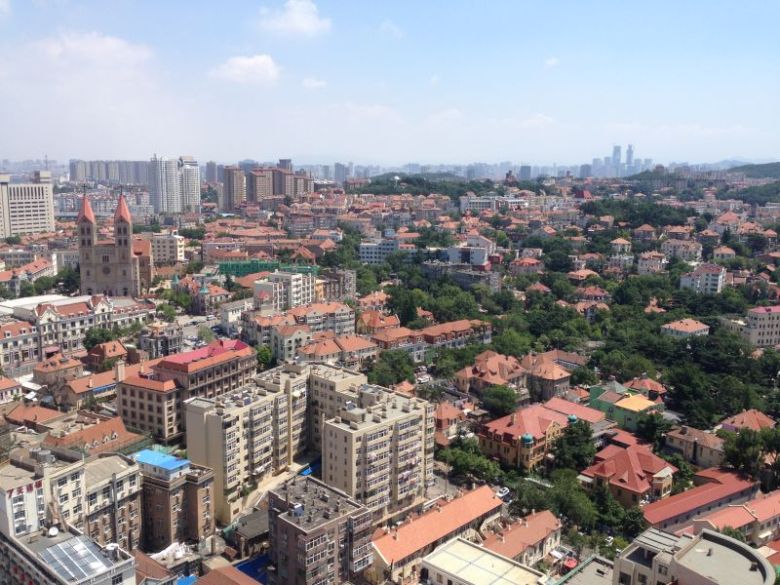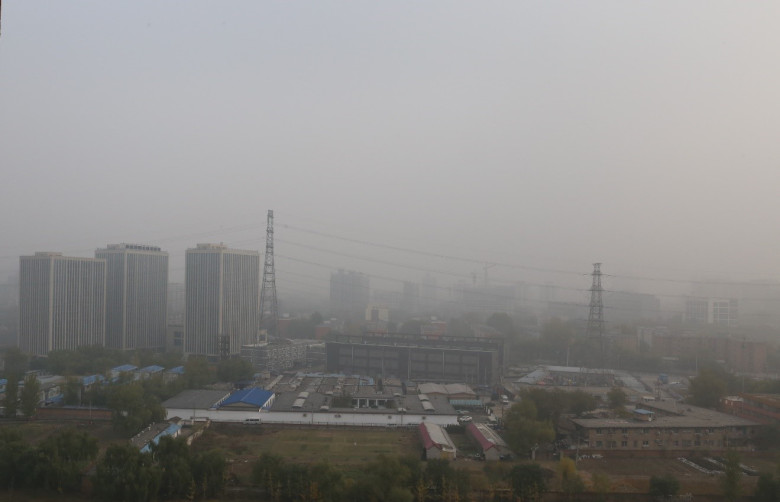Jun Yang
Tsinghua University, China
In the last three decades, urbanization in China moved ahead at an unprecedented speed. Between 1978 and 2014, the urbanization rate increased from 17.9% to 53.7% (Chinese Government Network, 2015 [In Chinese]). During that time, more than five hundred million people moved from rural areas into cities. Rapid urbanization, along with industrialization, has propelled social and economic development not only in China, but globally as well.
However, the prospect of continuing at such high levels of urban development is dimming for three reasons. First, urbanization in China in the last three decades was driven externally by international industry transfer associated with the de-industrialization of developed countries. China’s status as “the world’s factory” provided funding and a workforce for urbanization. Internally, policies and regulations favoring urbanization, especially land use policy, paved the way for rapid urbanization. Nevertheless, as China’s economy has begun to slow due to the drop of the global market, the sustainability of this rapid urbanization has become a great challenge.
Secondly, rapid urbanization has created various social problems that threaten social stability and the sustainability of urbanization, such as the failure of the government to integrate new migrants into urban society. Nearly three hundred million migrant workers and their families are living in cities, but due to the household registry policy (known as hukou), they are not entitled to public services such as education, medical service, jobs, and housing. The lack of equal access creates issues of social injustice that can lead to urban poverty, crime and social unrest. In order to absorb this huge population into the fabric of urban life, the government must find the resources and change methods of governance. Both will not be easy.
Finally, urbanization has had a dramatic impact on the environment. According to the 2014 Report on the State of Environment in China, only 16 out of 161 cities where new air quality standards are enforced reached attainment status, and the quality of groundwater in nearly 60% of cities was classified as ‘poor’ or ‘very poor’ (Ministry of Environmental Protection of China, 2015 [In Chinese]). These environmental issues have already inflicted a toll on the health of urban residents. A recent study estimated that air pollution in China contributes to 1.6 million deaths per year (Rohde and Muller, 2015). A consensus reached between the general public and the government is that the environment should be given priority in any and all future urban expansion.
The New Urbanization Strategy
Faced with these challenges, what should be done? China cannot put a hold on its urbanization processes because it is considered as the main driving force for the social and economic development in China. On the other hand, the old way of urbanization is no longer considered as desirable. New strategies and goals are needed. As a response, the Chinese government released the National Plan of New Urbanization (2014-2020) in March, 2014 (State Council of China, 2014). The main content of the plan includes:
- Converting the rural population into urban residents in an orderly manner.
- Integration of industrialization, application of information technologies, urbanization, and agricultural modernizations.
- Stipulations regarding the spatial layout of urban areas in China, which will be centered on urban agglomerations. It also calls for coordinated developments of small and large cities.
- Emphasis on the importance of ecological conservation and green life styles.
- Preserving the unique natural and cultural features of every city.
- Stresses the need to break the urban-rural duality. It suggests that the incentives for new urbanization will come from reforms in key sectors such as the labors, finance, and land resources.

Figure 2. The spatial layout of planned urban agglomerations in China. The sizes of circles were drawn in proportion to the importance of the agglomerations. 1- Wuchangshi; 2- Hachang; 3-Liaozhongnan; 4-Jingjinji; 5-Hubaoeyu; 6-Taiyuan; 7-Ninxiayanhuang; 8-Lanxi; 9-Guanzhong; 10-Zhongyuan; 11-Shandongbandao; 12-Chengyu; 13-Wuhan; 14-Jianghuai; 15-Changsanjiao; 16-Dianzhong; 17-Qianzhong; 18-Changzhutan; 19-Huanboyanghu; 20-Haixiaxian; 21-Beibuwan; 22-Zhusanjiao
What will be the outcomes if the plan has been fully implemented? In order to provide a reference point, I compared the targets of China’s new urbanization strategy to the urban sustainable development goals (SDGs) contained in the Transforming our world: the 2030 Agenda for Sustainable Development (United Nations, 2015), which was passed in September, 2015 by United Nations Sustainable Development Summit.
Table 1 Comparison of the urban SDGs with China’s New Urbanization strategy
| Urban Sustainable Development Goal | New Urbanization strategy of China |
| 11.1. By 2030, ensure access for all to adequate, safe and affordable housing and basic services and upgrade slums | Chapters 7 & 26: Achieve the balance of supply and demand through the market and governmental programs; ensure these who work permanently in cities will be entitled to affordable housing. |
| 11.2. By 2030, provide access to safe, affordable, accessible and sustainable transport systems for all, improving road safety, notably by expanding public transport, with special attention to the needs of those in vulnerable situations, women, children, persons with disabilities and older persons | Chapter 16: Give the priority to public transportation and achieve the goal of public transit stops within the 500- meter distance for all people in central districts of cities with a population over one million |
| 11.3. By 2030, enhance inclusive and sustainable urbanization and capacity for participatory, integrated and sustainable human settlement planning and management in all countries | Chapter 17: Improve the transparency and scientific rigor of urban planning and management |
| 11.4. Strengthen efforts to protect and safeguard the world’s cultural and natural heritage | Chapter 18: Emphasize the protection of cultural and natural heritage |
| 11.5. By 2030, significantly reduce the number of deaths and the number of people affected and substantially decrease the direct economic losses relative to global gross domestic product caused by disasters, including water-related disasters, with a focus on protecting the poor and people in vulnerable situations
|
Chapter 19: Enhance the emergency response system, improve the resistance to disasters, increase information sharing, and increase community participation in emergency management |
| 11.6. By 2030, reduce the adverse per capita environmental impact of cities, including by paying special attention to air quality and municipal and other waste management | Chapter 27: Promote low-carbon development and enforce the most strict eco-environment protection regulations |
| 11.7. By 2030, provide universal access to safe, inclusive and accessible, green and public spaces, in particular for women and children, older persons and persons with disabilities | Chapter 18: Increase the ecological spaces in cities, including forests, lakes, wetlands, greenways |
| 11.a. Support positive economic, social and environmental links between urban, peri-urban and rural areas by strengthening national and regional development planning | Chapters 20-22: Reduce the gap between urban and rural areas and increase the vigor of rural economy |
| 11.b. By 2020, substantially increase the number of cities and human settlements adopting and implementing integrated policies and plans towards inclusion, resource efficiency, mitigation and adaptation to climate change, resilience to disasters, and develop and implement, in line with the Sendai Framework for Disaster Risk Reduction 2015–2030, holistic disaster risk management at all levels | Chapters 16 & 19: Enhance the adaptation capacity of infrastructure to extreme weather events |
| 11.c. Support least developed countries, including through financial and technical assistance, in building sustainable and resilient buildings utilizing local materials | Not applicable |
From the comparison we can see that China’s New Urbanization strategy aligns well with the urban SDGs. It addresses every SDG to a certain degree. However, there are still some differences. For example: the urban SDG is more ambitious on affordable housing because it calls for universal access. China’s more conservative goal reflects the reality that affordable housing is not an easy-to-solve problem for China as the inter-governmental structure was believed to be the main barrier (Zou, 2014). Another noticeable difference is the lack of emphasis on adaptation to climate change in China’s strategy. It does address preparation for extreme weather events in cities. Nevertheless, slow changes such as the rise in average temperatures and the alteration of precipitation patterns can also pose great risks to many urban areas in China especially since more than 50% of Chinese cities have water shortage problems.

Figure 3. Old section of Qingdao City encroached by new developments. Qingdao has experienced erosion of its historical identity by recent urban developments. The city is famous for its unique combination of German and Chinese architecture and is famous for Tsingdao Beer. (Photos taken by Zhili Yang on 07/04/2015)
Research and Practice Needs
China’s New Urbanization strategy clearly learns lessons from past urbanization and attempts to address the roots of identified problems. Its goals are also largely comparable to the urban SDGs, which has been adopted by the international community. However, a good plan is only half of the job done. In order to successfully implement their strategy, China needs knowledge and tools that are not readily available as no country has ever managed to absorb such a large rural population into cities in such a short time. In particular, I believe that researchers and policymakers need to work together on the following issues:
- The resource constraints on China’s urbanization. This should be done at multiple scales, including global, regional, and local scales. Due to globalization, urbanization in China is never an internal development issue but is tightly linked to the global supply and consumption of energy and resources. The thresholds of resource that China’s urbanization can be sustained will determine the speed and scale of the urbanization.
- The drivers of China’s urbanization. Urbanization in different parts of China is being driven by large-scale socio-economic forces and policies as well diverse local factors. The effects of the interactions of these factors are still poorly understood. E.g., how does the high-speed rail help to coordinate urbanization in a large region?
- The capacity to predict the pattern and process of China’s urbanization under different climate change, socio-economic, and technical scenarios. The policy making process needs qualitative information as well as quantification measures. To provide that capacity, models that can couple natural environmental dynamics, demography, socio-economic development, and technology advancements to make predictions on urbanization at multiple scales need to be developed.
- The causes and develop solutions for social problems caused by China’s urbanization. Although significant progress has been made on this front, our knowledge on many problems is still very poor due to limited studies. For example, how does urban poverty arise in Chinese cities? How do we address the roots of urban crime? How do we address the psychological problems of children left behind in villages when their parents migrate to larger cities to look for work? How do we fix the fragmented social structure in shrinking villages? How do we avoid the loss of a city’s identity in the era of globalization?
- Applied technologies and practices that are necessary for the implementation of China’s New Urbanization strategy, including: environmental monitoring and assessment, early-warning systems for disasters, new urban planning and design techniques, green building construction techniques, technologies for creating smart and/or low-carbon cities, etc.
What I have listed certainly isn’t a complete list of research and practice needs created by the China’s New Urbanization. The sheer size of this strategy makes it the largest experiment in social development in our history. It needs the support of the best science and practices in all related fields.
Acknowledgements: I would like to thank my colleagues Peng Gong and Tinghai Wu for the discussions that inspired me to write this article.

Dr. Jun Yang is Associate Professor of Ecology at the Center for Earth System Science at Tsinghua University, Beijing, China.
This blog was originally posted on UGEC Viewpoints: A Blog on Urbanization and Global Environmental Change.

